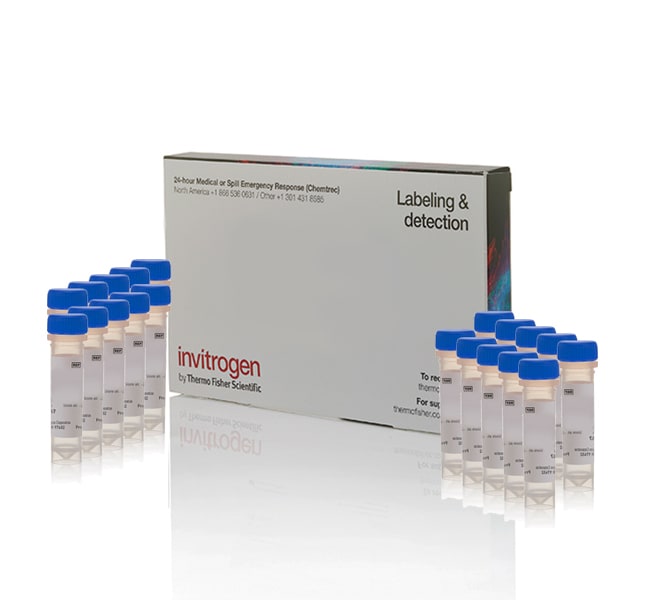Search Thermo Fisher Scientific
- Contáctenos
- Orden Rápida
-
¿No tiene una cuenta? Crear una cuenta
Search Thermo Fisher Scientific

| Número de catálogo | Cantidad | Tipo de colorante |
|---|---|---|
| C7025 | 20 x 50 μg | CellTracker Green CMFDA |
| C2925 | 1mg | CellTracker Green CMFDA |
| C2927 | 1 mg | CellTracker Orange CMTMR |
| C34552 | 20 x 50 μg | CellTracker™ Red CMTPX |
Adhesión celular, análisis celular, proliferación celular, marcado y seguimiento celular, viabilidad celular y citotoxicidad, viabilidad celular, proliferación y función, Imágenes celulares, ensayos de toxicología celular, quimiotaxis y migración celular, descubrimiento y desarrollo de fármacos, marcado celular general, detección de glutatión, detección de alto contenido (HCS), inmunofluorescencia (IF), tinción y detección de inmunofluorescencia, señalización y homeostomía, señalización, identificación y señalización Seguimiento microbiano, estrés nitrooxidativo, ensayos ADME/Tox basados en dianas, detección de pH





Calcein, AM and FDA (fluorescein diaceate) are examples of some dyes used for this application. Since these dyes are not incorporated or covalently attached to any cellular components, they may have a short retention time as some cell types may actively efflux the dye out of the cells. The CellTracker and CellTrace dyes include either a mild thiol-reactive chloromethyl group or amine-reactive succinnimidyl ester group to allow for covalent binding to cellular components, providing for better retention. As with any reagent, one should empirically determine retention times for the cell type used.
Find additional tips, troubleshooting help, and resources within our Cell Analysis Support Center.
Calcein, AM is a good choice for cell tracking and as a general cytoplasmic stain. However, it doesn't bind to anything and may be actively pumped out of the cells within a couple hours, which is likely what happened. The retention of Calcein within live cells is dependent upon the inherent properties of the cell type and culture conditions.
For long-term imaging, you may wish to consider a reactive cytoplasmic stains such as CFDA, SE or the CellTracker and CellTrace dyes.
Find additional tips, troubleshooting help, and resources within our Cell Analysis Support Center.
Yes, the CellTracker dyes react with any accessible thiol part of the protein and can be fixed. However, some CellTracker dyes may be attached to small metabolites that can leak from the cell following permeabilization. This can result in decreased fluorescence.
Find additional tips, troubleshooting help, and resources within our Cell Tracing and Tracking Support Center.
The shelf life for CellTracker Green CMFDA Dye is one year after receiving it, when stored desiccated at -20 degrees C.
One possibility is that there is spectral bleedthrough between the dyes. Be sure to check the single-color samples by imaging the red cells in green and imaging the green cells in red, using the optimal imaging settings for the other color. If you see bleedthrough with these controls, then you will have to reduce the dye label concentration to reduce the brightness of the dyes, or choose dyes that are farther apart spectrally. If the issue isn’t bleedthrough, another possibility is that the cells were not adequately washed after staining, allowing some unincorporated dye to remain and label the other cells after they were introduced. Extending washes and wash times should help with this.
Find additional tips, troubleshooting help, and resources within our Cell Analysis Support Center.
Compartir número de catálogo, nombre o enlace.